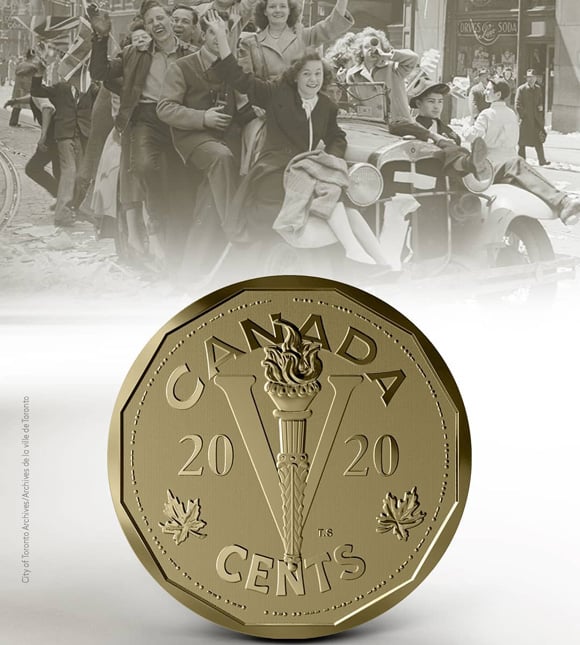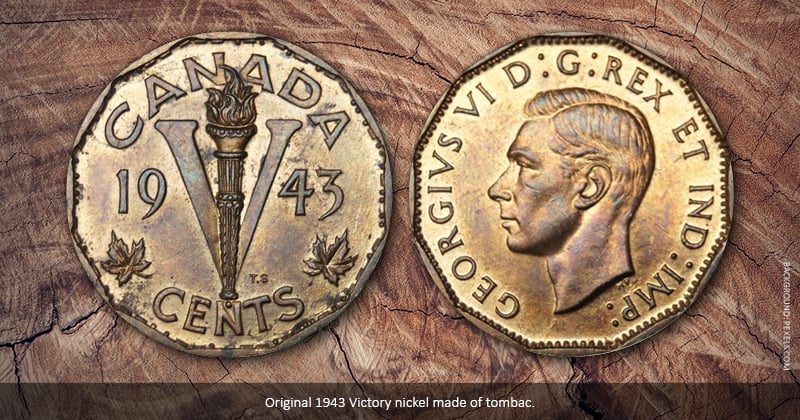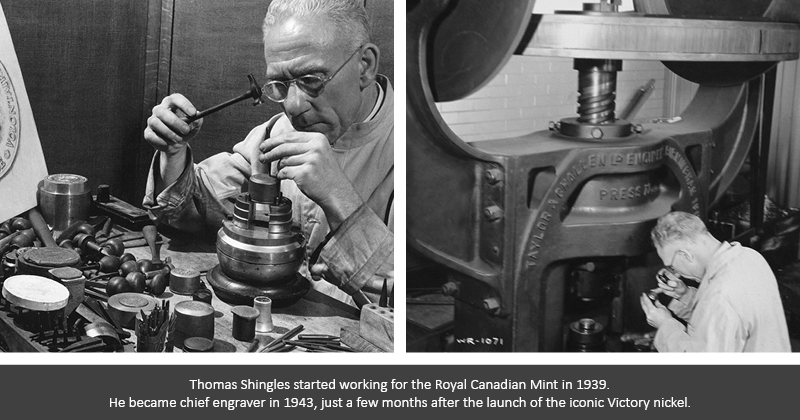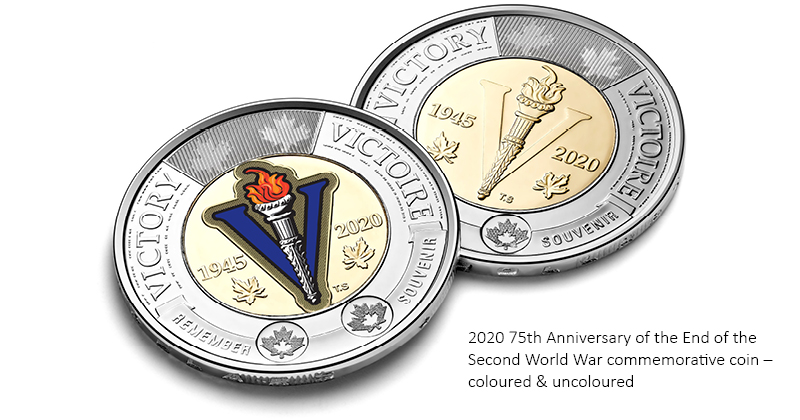'V’ for victory | How the Victory Nickel became an enduring symbol of hope
- Sep 03, 2020
- History
- 5 minutes read




To rally spirits and reinvigorate the belief that the war could be won, the Royal Canadian Mint unveiled a five-cent coin featuring a design partly inspired by Sir Winston Churchill’s famous “V for Victory” sign. The design was the brainchild of engraver Thomas Shingles, and was the first coin to be designed, engraved and struck entirely in Canada, with Shingles hand-cutting the master matrix.
A “nickel” in name only
While five-cent pieces have been called nickels in Canada for generations, the Victory Nickel was actually minted in bronze alloy because nickel was desperately needed for weaponry and armour plating. Working with other Mint officials, Shingles created a design that featured the now-iconic “V”, a flaming torch to represent sacrifice, and a coded patriotic message using Morse code to spell out “We win when we work willingly” around the edge of the coin.
Victory Nickels were produced from 1943 to 1946, then retired in favour of the much more placid beaver once the war was done.


Our own past influences the present
This year, as we celebrate the end of the Second World War, our own past influences the present, with the 1945 Victory nickel serving as the inspiration for the design of our latest commemorative coin. The famed “V” is the centrepiece of the 75th Anniversary of the End of the Second World War commemorative coin, which today serves as a token to remember and to honour the brave men and women who fought for our freedom – 75 years ago.
Hold onto bravery with the 2020 75th Anniversary of the End of the Second World War commemorative coin.





